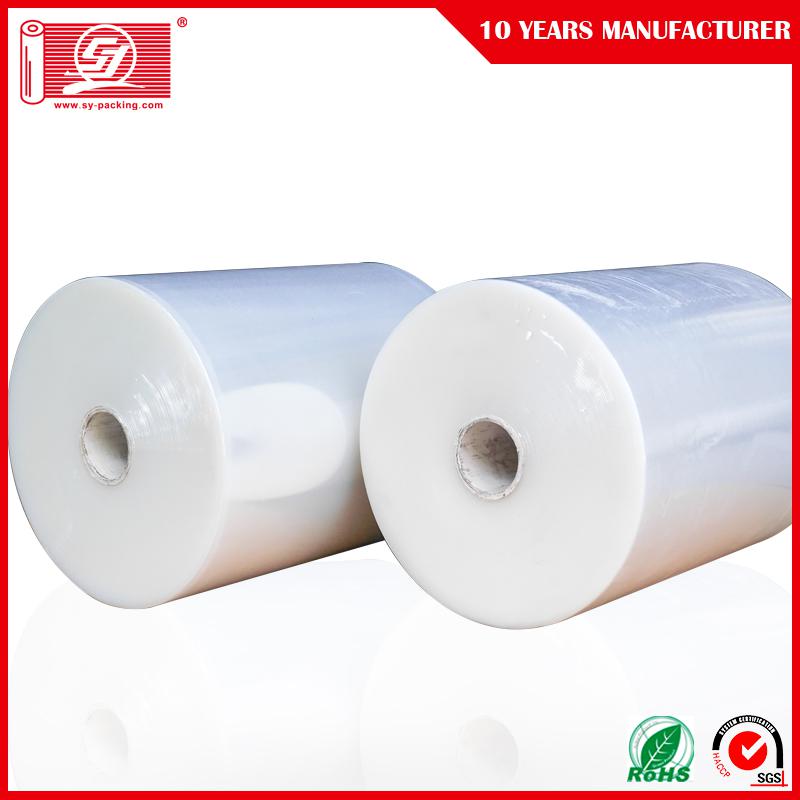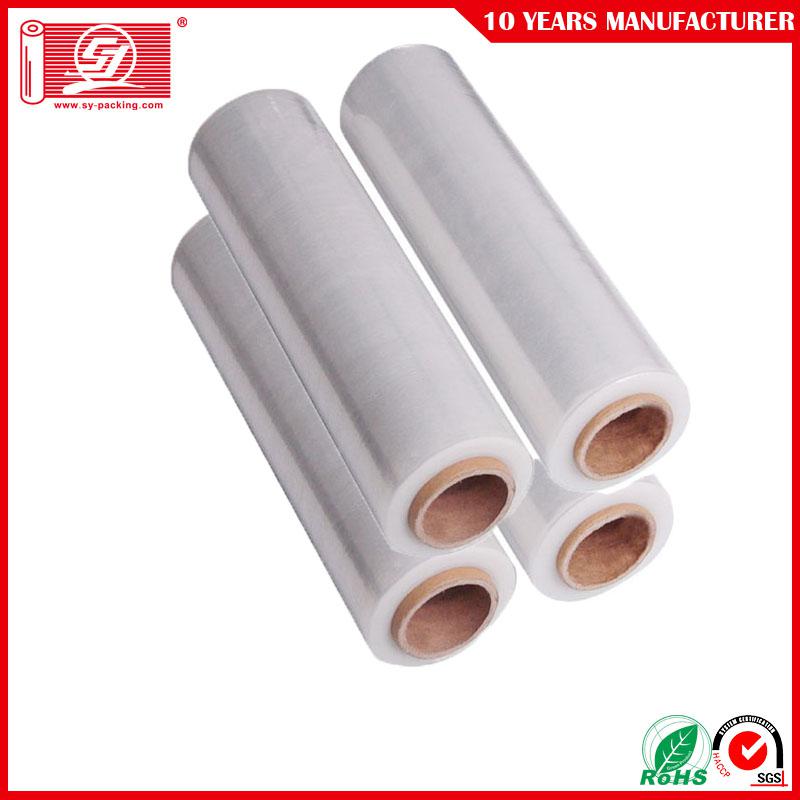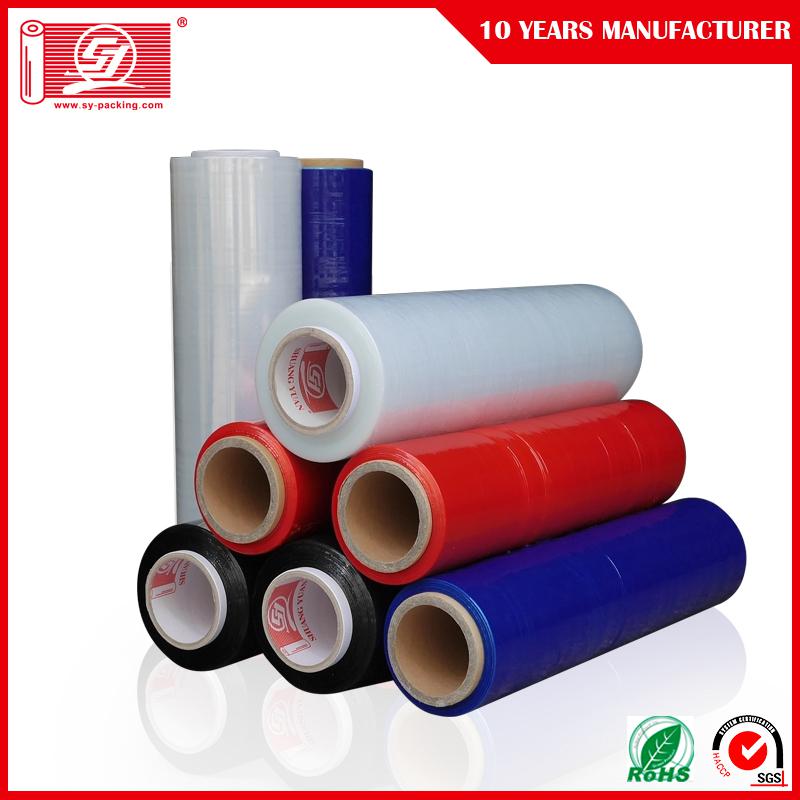Polylactic acid (PLA) is a new type of polyester material produced from organic acid lactic acid. It has advantages over existing plastic materials such as polyethylene, polypropylene, and polystyrene. It is defined by the industry as the most promising for the new century. The new packaging materials, which are environmental protection packaging materials — stars, in the future — will be expected to replace polyethylene, polypropylene, polystyrene and other materials for plastic products, and have broad application prospects. Reproduced from corn plastic
LLDPE Stretch Film material is LLDPE and import from DOW, about stretch film, we can do as customer requirement, such as Hand Stretch Film , Machine Stretch Film, Stretch Film Jumbo Roll, Pre-stretch Film , Mini Stretch Film , Colorful Stretch Film. The width usually have 450mm and 500mm or as your size. The thickness have 10mic- 35mic. LLDPE stretch film wrap pallet and goods. Packaging way 1 rolls into a plastic then 4rolls/ 6rolls into a carton.
If you are interested in it please don`t hesitate contact with us.
Production
Item NO.
Size
Super thin stretch film
SY-1701
450MM*500M*12U
Hand use stretch film
SY-1710
500MM*300M*23U
Pre-Stretch Film
SY-2701
500MM*1320M*8U
Machine use stretch film
SY-2503
500MM*1300M*25U
Special stretch film
SY-1702
100MM**0.3KGS*20U
Colored stretch film
SFY2606
450MM*500M*23U
LLDPE stretch film wrap picture as below:
Polylactic acid has good biodegradability, can be completely degraded by microorganisms in the natural world after use, and ultimately generates carbon dioxide and water, does not pollute the environment, which is very favorable for the protection of the environment.
Polylactic acid has good mechanical properties and physical properties, suitable for blow molding, thermoplastics and other processing methods, processing is convenient, application is very extensive. It can be used to process various plastic products from industrial to civilian use, packaged foods, fast food lunch boxes, non-woven fabrics, industrial and consumer cloths. Into the mouth of labor into agricultural fabrics, health fabrics, rags, hygiene products, outdoor UV protection fabrics, tent fabrics, floor mats and so on, the market is very promising.
Polylactic acid has good compatibility and biodegradability, and is also widely used in the medical field. For example, it can produce disposable infusion tools, exfoliation-free surgical sutures, and low polylactic acid as drug sustained-release packaging agents.
The production of polylactic acid is based on lactic acid. Most of the traditional lactic acid fermentation uses starch-based raw materials. At present, the United States, France, Japan and other countries have developed and used agricultural and sideline products as raw materials for the fermentation of lactic acid to produce polylactic acid.
The American company LLC produces polylactic acid as follows: corn starch is hydrolyzed to glucose and then anaerobicly fermented with lactobacillus. The fermentation process uses liquid caustic soda to generate lactic acid. The fermentation broth is purified and electrodialyzed to achieve a purity of 99%. .5% L-lactic acid. PLA manufacturing processes made of lactic acid include: (1) Direct polycondensation, and use of solvents under vacuum to dehydrate polycondensate. (2) The non-solvent method produces lactic acid as a cyclic dimer lactide, which is polycondensed in open loop to PLA.
A U.S. institute has successfully developed a method to convert the scrapped potatoes after cheese production into glucose syrup, ferment them with bacteria into lactic acid fermentation liquor, and electrodialysis separation and heating to evaporate water to obtain polylactic acid that can be used for making films and coatings. As a fresh-keeping bag and in place of polyethylene and waterproof wax packaging materials.
The Erstein sugar factory and a university in France developed sugar beets as raw materials, first decomposed into monosaccharides, fermented to produce lactic acid, and then used chemical methods to polymerize lactic acid into polylactic acid, and also used industrial sugar-making processes to degrade waste sugar. Liquid to produce polylactic acid, the production cost has dropped significantly.
Japan's Bell spinning company uses corn as raw material to ferment and produce polylactic acid, using polylactic acid to make biodegradable foaming material. The process is to mix a special additive in polylactic acid, control its molecular structure, make it become easily foamable particles, and then add the organic compound foaming agent made of carbohydrate, and shape it in the molding machine. High-pressure steam is heated to a foamed material. The strength of the material, such as compressive stress, cushioning, and chemical resistance, is the same as that of polystyrene plastics. It does not pollute the environment after incineration, but it can also be fattened.




LLDPE Stretch Film
LLDPE Stretch Film,Stretch Film LLDPE,Clear LLDPE Stretch Film,LLDPE Stretch Film For Pallet
SHENZHEN SHUANGYUAN PACKAGING MATERIAL CO., LTD. , http://www.sy-package.com